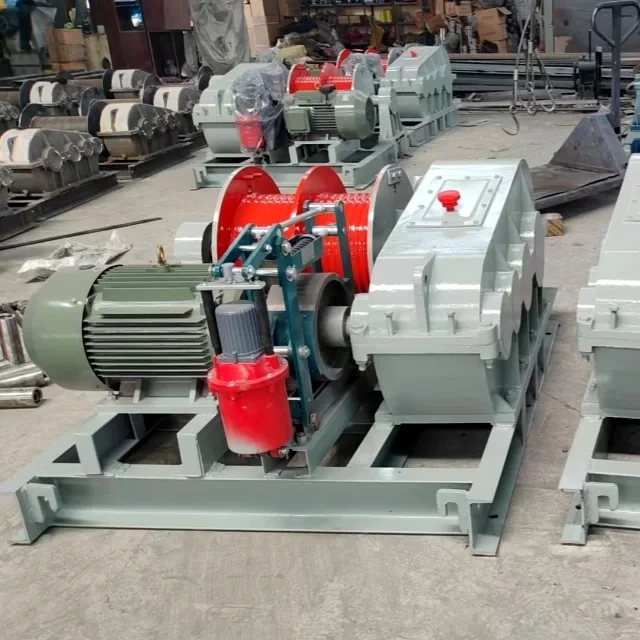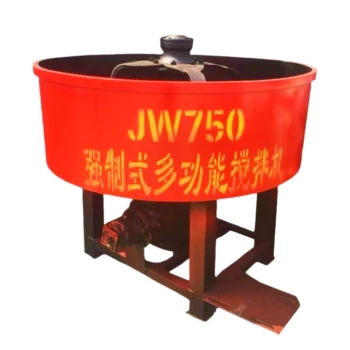Construction hoists are the backbone of vertical material movement, but their noise can disrupt worksites and surrounding communities. The key to quieter operation lies in understanding the delicate balance between bearing clearance and rotational speed—two factors that directly influence vibration and noise generation. This guide breaks down the mechanics of hoist noise, compares the impact of clearance versus speed, and provides actionable strategies for noise-sensitive projects.
Mechanics of Noise Generation in Construction Hoist Bearings
Role of Radial Clearance in Vibration Amplification
Bearings with excessive radial clearance allow the spindle to "rattle" within its housing, creating impact noise as components collide. Think of a loose wheel on a shopping cart—the louder the clatter, the greater the gap. In hoists, this manifests as:
- Inconsistent Load Distribution: Uneven forces on bearing surfaces increase friction.
- Harmonic Oscillations: Gaps amplify small vibrations into audible frequencies.
However, too little clearance can also be problematic, causing overheating and premature wear. The goal is a "Goldilocks zone"—enough space for lubrication flow but tight enough to minimize play.
Speed-Induced Resonance and Harmonic Effects
While clearance sets the stage, speed steals the spotlight in noise production. Studies show rotational speed contributes 60–70% more to noise levels than clearance alone. Here’s why:
- Resonance Thresholds: At certain RPMs, vibrations synchronize with natural frequencies of hoist components, creating a "hum" or whine.
- Lubricant Displacement: High speeds can starve bearings of lubricant, leading to metal-on-metal contact.
Ever wondered why some hoists suddenly get louder at specific speeds? That’s resonance in action—like a guitar string vibrating at its pitch.
Comparative Impact Analysis: Clearance vs. Speed
Thresholds for Noise Escalation
| Factor | Low Impact Scenario | High Noise Risk Scenario |
|---|---|---|
| Clearance | 0.05–0.1mm (precision fit) | >0.2mm (excessive play) |
| Speed | >800 RPM (resonance peaks) |
Data shows that halving the speed (e.g., from 1000 RPM to 500 RPM) reduces noise by 8–12 dB—equivalent to a 60% perceived volume drop. In contrast, tightening clearance by 0.1mm typically yields only a 3–5 dB improvement.
Trade-offs Between Lubrication and Noise
- High-Clearance Pros: Better lubricant flow, lower friction heat.
- High-Clearance Cons: Increased vibration noise.
- Low-Speed Pros: Reduced resonance risk.
- Low-Speed Cons: Slower material transport.
For noise-sensitive sites like hospitals or schools, prioritize speed reduction over clearance adjustments.
Strategies for Noise Mitigation in Hoist Operations
Precision Bearing Selection and Tolerance Standards
Opt for bearings with:
- C3 Clearance Class: Slightly tighter than standard industrial bearings.
-
Polymer Retainers: Dampen vibrations better than metal cages.
Brands like Garlway integrate noise-optimized bearings in their winches, leveraging tapered roller designs for balanced performance.
Speed Regulation Techniques
- Variable Frequency Drives (VFDs): Smooth acceleration avoids resonance spikes.
- Load-Based Speed Control: Automatically reduce RPM for lighter loads.
- Anti-Vibration Mounts: Isolate motor vibrations from the hoist frame.
Did you know? A hoist running at 75% capacity and 600 RPM can be quieter than one at 30% load and 900 RPM—even with identical bearings.
Conclusion: A Synergistic Approach to Quieter Hoists
Noise reduction isn’t about choosing between clearance or speed—it’s about harmonizing both. Start by:
- Auditing Current Settings: Measure noise at different speeds using a dB meter.
- Prioritizing Speed Control: Install VFDs before overhauling bearings.
- Consulting OEM Guidelines: Garlway’s engineering teams provide site-specific tuning for their equipment.
By treating clearance as a baseline and speed as the primary lever, contractors can achieve quieter operations without sacrificing efficiency. After all, the best hoist isn’t just the strongest—it’s the one you barely hear.
Related Products
- Commercial Construction Mixer Machine for Soil Cement Mixing Concrete
- Portable Concrete Mixer Machine Equipment for Mixing Concrete
- Electric Hoist Winch Boat Anchor Windlass for Marine Applications
- HZS75 Concrete Batching Plant Cement Mixer Price Concrete Mixer Bunnings Mixing Plant
- HZS120 Ready Mix Concrete Batching Plant Commercial Mud Cement Mixer
Related Articles
- How to Choose the Right Concrete Type for Every Construction Challenge
- How to Choose Concrete Mixers for Long-Term Reliability and Cost Savings
- How to Build an OSHA-Compliant Safety System for Concrete Mixer Workspaces
- How to Test Concrete Mixer Brake Systems for Optimal Safety and Compliance
- How to Classify and Resolve Concrete Mixer Hazards with Compliance














